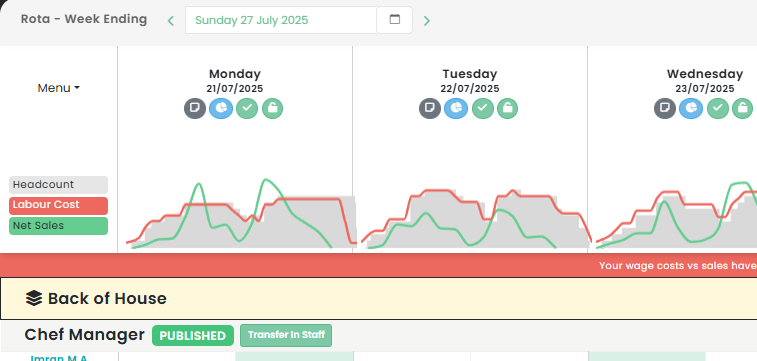Maximising Restaurant Profits: An In-depth Analysis of Average Earnings, Profit Margins and Financial Health in the Hospitality Industry
Stay informed with industry news, tips, and practical guides for hospitality professionals.
Understanding the Average Restaurant Profit Margin in the UK Hospitality Industry
Introduction
In the bustling world of the hospitality industry, a key factor that drives the success of a restaurant business lies in understanding and improving restaurant profit margin. Every restaurant owner should have a sound knowledge of restaurant profitability and ways to increase restaurant profit. This article explores the average restaurant earnings, the dynamics of restaurant revenue, and practical ways to maximise profits.
A Look into Restaurant Profitability
The profit margin in the hospitality industry, particularly in restaurants, is a critical measure of a business's financial health. Profitability in hospitality is generally calculated by comparing the restaurant's income with its total costs. This profit margin analysis helps in gauging the efficiency of restaurant management and the strategic decisions they make concerning pricing, cost control, and operational efficiency.
Understanding the Average Restaurant Profit Margin
The average restaurant profit margin usually ranges between 3% to 5% but can reach up to 10% in some successful restaurant businesses. This figure may seem relatively small, but it's essential to consider the high operating costs involved in running a restaurant. These include food costs, labour expenses, rent, and utilities, all of which can significantly affect the average restaurant earnings.
Maximising Restaurant Profits
Maximising restaurant profits requires a balance of increasing restaurant revenue and reducing costs. Here are some strategies to consider:
- Efficient Restaurant Management: Effective management can help control costs, improve service efficiency, and increase customer satisfaction, all of which contribute to overall profitability.
- Menu Pricing: Pricing is a critical factor influencing the restaurant's income. Striking a balance between customer expectations and the cost of ingredients is vital in determining the final restaurant revenue.
- Cost Control: Keeping a tight control on inventory and waste can significantly reduce costs, thereby increasing the restaurant business profit margin.
The Impact of the Food Industry on Profitability
The food industry profitability has a direct impact on restaurant profit margins. Rising food costs can squeeze the average restaurant profit margin, making it crucial for businesses to regularly review their suppliers and negotiate better prices. Furthermore, staying abreast of food trends can help restaurants attract a wider customer base, thus increasing restaurant revenue.
Conclusion
Understanding the dynamics of restaurant profitability is a continuous, demanding process. However, it is a necessary one for any restaurant aspiring to succeed in the competitive hospitality industry. By keeping a close eye on the restaurant profit margin, making informed decisions based on profit margin analysis, and consistently implementing strategies to increase restaurant profit, it's possible to maintain a healthy, successful restaurant business.
Remember, the ultimate goal isn't just about achieving a high restaurant income. It's about maintaining a sustainable restaurant business that can adapt, grow, and thrive in the ever-changing landscape of the UK hospitality industry.
Ready to simplify hospitality ops?
We’ve got you.
Speak with an Opsyte expert to see how we help:
- Save hours on staff scheduling and rota planning
- Automate invoice processing and financial insights
- Track live labour costs vs sales in real-time
- Get fast answers and support from real humans
- Automate your P&Ls

“Opsyte transformed our entire back office. Game changer.”
Read articles from our hospitality experts
-
Unveiling the Secrets to Successful Restaurant Business: Understanding Average Profit Margins and Boosting Restaurant Revenue
What is the Average Profit Margin for Restaurants?Understanding the average profit margin for restaurants is vital for anyone involved in the restaurant business. It provides a clear picture of the…...
-
Mastering the Art of Dining: Comprehensive Strategies to Improve Your Restaurant - From Management to Customer Service, Marketing and Beyond
How to Improve Your Restaurant: A Comprehensive GuideIn the highly competitive hospitality industry, improving your restaurant takes more than just a passion for food. It involves a careful balance of…...
-
Leveraging the QSR Industry: Understanding Fast Food Trends, Strategies, and Growth in the Hospitality Business
Understanding the QSR Industry in the UK Hospitality LandscapeThe Quick Service Restaurant (QSR) industry, commonly referred to as the fast food industry, is a significant component of the UK's hospitality…...
-
Maximising QSR Services: An Insight into Trends, Technology, and Growth Strategies in the Fast Food Industry
Embracing the Future of QSR Services in the UK: A Comprehensive AnalysisIn the ever-evolving landscape of the UK hospitality industry, Quick Service Restaurants (QSR services) have emerged as a pivotal…...
-
Unlocking the Secrets of Profitability: An In-depth Analysis of Average Restaurant Profit Margins in the Hospitality Industry
Understanding the Average Restaurant Profit Margin in the UK Hospitality IndustryThe restaurant industry forms a significant fraction of the UK's hospitality industry. As an industry that's intrinsically linked to consumer…...
-
Boosting Your Business: Innovative Bar Promotional Ideas and Marketing Strategies to Increase Sales and Traffic
10 Innovative Bar Promotional Ideas to Boost Your BusinessThe UK's hospitality industry is a vibrant and competitive space with bars and pubs at its heart. As a bar owner or…...
